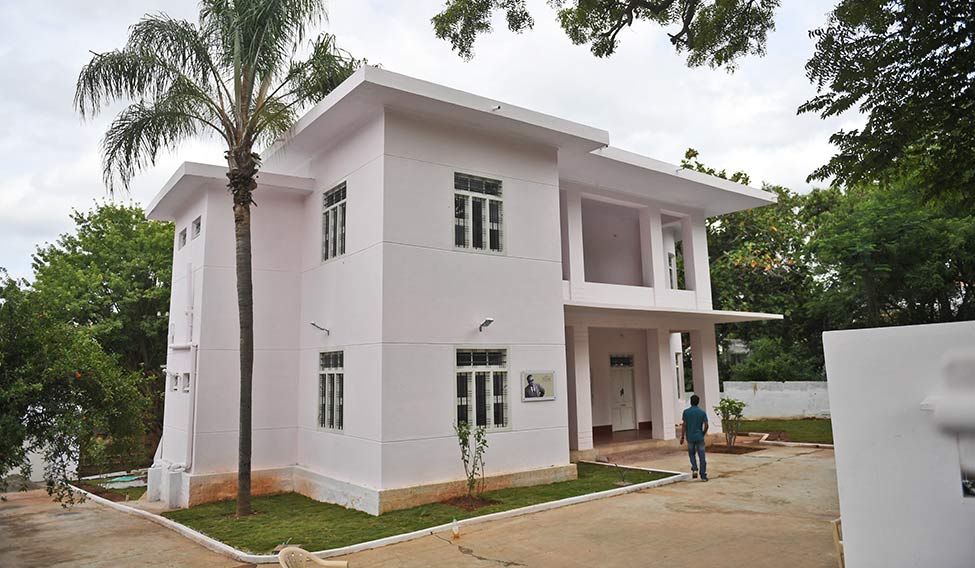As you walk through Yadavagiri, half-curious and half-excited to see R.K. Narayan’s house, you regret having arrived late; late by many decades.
This white, two-storey building in Mysuru, Karnataka, where Narayan penned some of his most memorable stories, was recently turned into a memorial. “I kept my Yadavagiri House as a retreat for writing.... I managed to write a thousand words a day and completed two novels and a number of short stories…,” Narayan wrote in his autobiography, My Days.
Malgudi, the fictitious town Narayan created in his first work, Swami and Friends (1935), was perhaps born out of the reflections of old Mysuru. This house was built in 1952, and Narayan shuttled between Yadavagiri and his old house in Lakshmipuram, where his parents and siblings lived.
Many of his characters were drawn from the ordinary people he encountered during his long walks around Yadavagiri, Sayyaji Rao Road, Vontikoppal and Kukkarahalli Lake near the University of Mysore. He lived in this house till the 1990s, when he moved to Chennai. He died in 2001, at the age of 94.
In 2011, the family sold the house to a developer. When the developer started demolishing the house, the authorities declared it a heritage site. Mysuru City Corporation bought the bungalow from the developer and spent Rs 35 lakh to renovate the house and restore the legacy of the famous novelist.
The memorial, inaugurated in July, houses a collection of rare photographs, awards and citations, memorabilia and personal belongings of the author, including his spectacles, watch, boots and coats, all collected from his friends and family. His Padma Bhushan (1964) and Padma Vibhushan (2001) medals, photographs of his childhood, and many others clicked by his friend and renowned photojournalist T.S. Satyan show the different facets of his life.
Colour stills from the popular television serial Malgudi Days adorn the walls. The room on the first floor, with eight bay windows, is where the writer penned many of his novels. The black-and-white frames show a little Narayan playing cricket and posing with his parents (1925), and an older Narayan with prime minister Jawaharlal Nehru and his close friend and author Graham Greene.
The idea for the museum came up after former Mysuru City Corporation commissioner C.G. Betsurmath visited William Shakespeare’s home in Stratford-Upon-Avon, England. He roped in Narayan’s family members and well-wishers to put together the memorial, which is now open to the public on all days except Tuesdays.
“An interpretation centre for the museum is in the offing. We could not access the original manuscripts as they are in a US university [Boston],” said Betsurmath.
When he was not “distracted” (as he wrote in My Days) by the calmness of nature, Narayan would ink the unforgettable frames of rural India and the life of the common man. The walls here seem cold. Perhaps they, too, miss the man who kept them company for long hours, sometimes engrossed in writing and, at times, gazing out of the large windows to catch a glimpse of the Chamundi Hills or the swaying trees.








